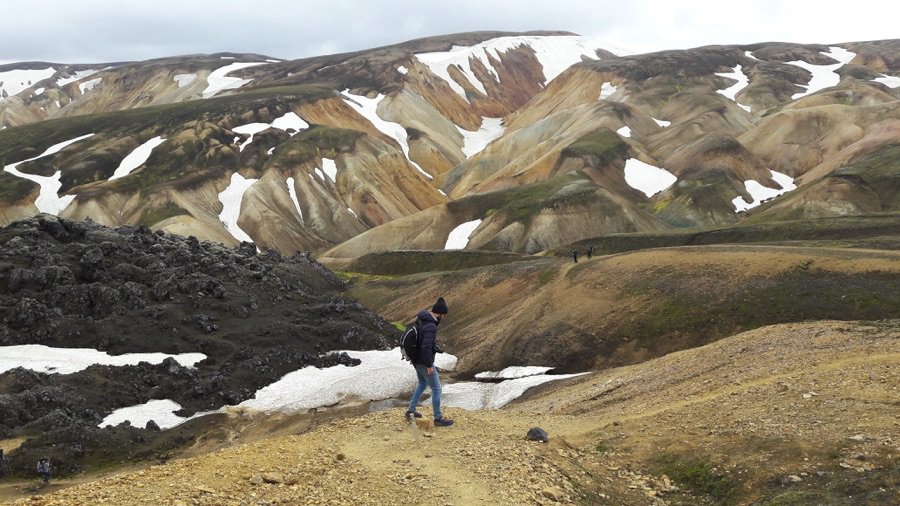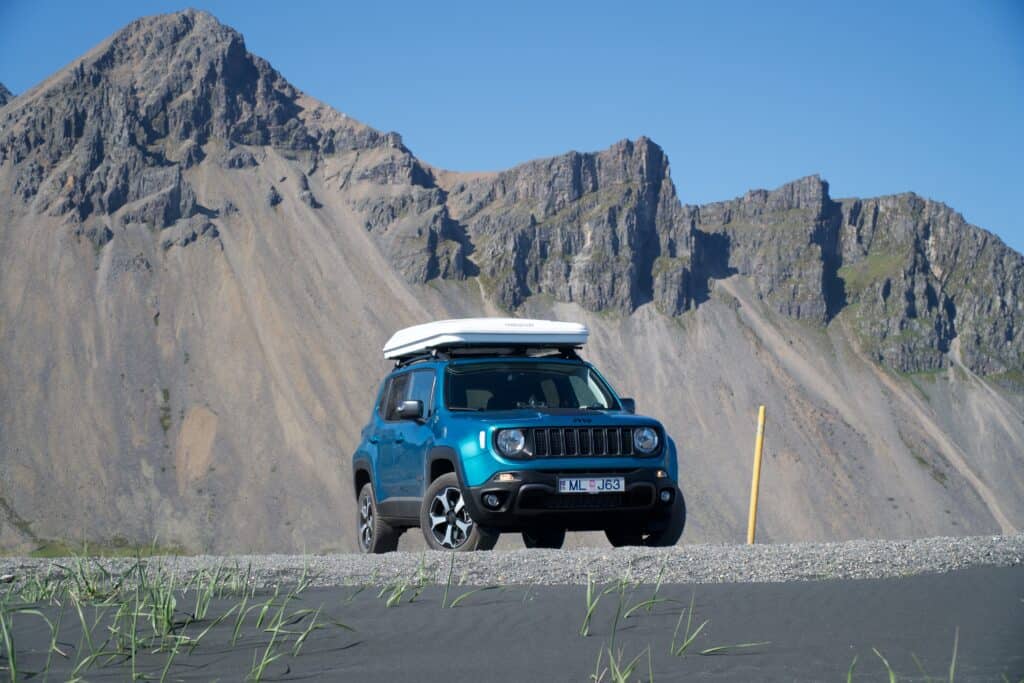If you’re planning to drive around Iceland, understanding the country’s size is more important than you might expect. While Iceland looks small on a map, its diverse landscapes — from volcanic fields and massive glaciers to dramatic fjords and long coastlines — make it feel much larger once you’re on the road.
Getting a sense of Iceland’s true scale will help you plan an itinerary you can realistically tackle. And if you’re exploring the country with an Iceland camper van rental, this context ensures you don’t miss anything on your must-see list.
So how big is Iceland? In this blog, we’ll provide an overview of Iceland’s size, not just in square miles but in real-life distances any traveler can understand, because a map alone does not do the country justice.
Where Is Iceland Located?
Iceland sits in the North Atlantic Ocean, just south of the Arctic Circle. But there’s more to Iceland’s location than its northern latitude. The country also straddles the Mid-Atlantic Ridge, where two tectonic plates slowly pull apart to create the geothermal hot springs, black sand beaches, and active volcanoes that define the dynamic landscape.
Being this far north shapes the Iceland experience in several ways. Summer brings nearly endless daylight thanks to the midnight sun, while winter days are short but offer prime northern lights viewing. The one constant? Weather that can change quickly. So come to Iceland prepared for anything and ready to be amazed at the sights and sounds.
How Big Is Iceland? Understanding Its Land Size
So, how large is Iceland, exactly? It’s approximately 103,000 square kilometers. If you prefer to understand the size of Iceland in square miles, it’s roughly 40,000. That makes the country roughly half the size of the UK, but with only about 0.6% of the UK’s population.
The country’s sparse population makes sense when you consider how much of Iceland is uninhabitable, with glaciers, lava fields, and jagged mountain peaks covering vast stretches of the interior. In some areas, hundreds of kilometers of wilderness separate small towns and settlements. So, depending on where you travel, you could very well encounter landscapes that feel utterly untouched and remote.
What Size Is Iceland Compared to a U.S. State?
Iceland’s size is comparable to Kentucky or Virginia, which helps put driving distances in perspective. A cross-country trip isn’t something you knock out in an afternoon, so realistic planning is essential. And remember, not all square miles of Iceland offer rest stops or services. Those vast stretches of uninhabited terrain make fuel planning more important than in a similar-sized U.S. state.

Iceland’s Regions and Landscapes: A Snapshot of Its Geography
For planning purposes, it’s best to break Iceland down into its key regions of Reykjavík/Southwest, South Coast, North Iceland, Eastfjords, Westfjords, and the Highlands. Each has its own distinct landscapes and corresponding travel considerations.
Reykjavík/Southwest is where you’ll find the capital of Iceland, along with iconic attractions like the Golden Circle, a sightseeing route that takes you past waterfalls, geothermal areas, and Thingvellir National Park.
The South Coast is a nature photographer’s paradise, with its black sand beaches, towering waterfalls, and vast glaciers. North Iceland is known for whale watching, volcanic activity, and dramatic fjords — glacier-carved sea inlets with steep walls. However, you’ll find the most awe-inspiring and dramatic fjords in the Eastfjords, broken up by picturesque fishing villages.
The Westfjords offer one of Iceland’s most remote regions, with quiet beauty, dramatic cliffs, and wildlife. A proper off-road-ready vehicle is required, and in some cases, a guide. This volcanic region is where you’ll encounter the most rugged terrain and unpredictable road conditions, so proper planning will be necessary for a safe trip.
How Many People Live in Iceland?
Iceland has a population of around 400,000 people, with about two-thirds concentrated in the Reykjavík capital region. This means the country has one of the lowest population densities in Europe, and you’ll feel it the moment you leave the city. But the solitude is part of the appeal: fewer crowds at natural wonders, dark skies perfect for stargazing and northern lights, and the rare freedom to have iconic landscapes nearly to yourself during your camping adventure.
How Long Does It Take to Drive Across Iceland?
When planning your visit to Iceland, land size will be a major factor in what you can and can’t see on any given day. Ring Road (aka Route 1) provides the most efficient way to see most of Iceland’s major attractions. Covering 1,332 kilometers (828 miles), Route 1 would take roughly 12 to 17 hours to drive without stops. However, with a packed itinerary, you can expect this drive to take five to 10 days.
Weather, road conditions, and frequent scenic stops all influence drive time. Don’t attempt snow-covered or unpaved roads without a 4×4 camper rental in Iceland. While the weather adds to the mystique and magic of Iceland in many ways, it also means you’ll need a highly capable vehicle to stay safe.
What Iceland’s Size Means for Travelers
Still, Iceland’s moderate size allows travelers the unique opportunity to explore the entire country in a matter of days, even while its diverse and rugged terrain creates the feeling of having explored multiple continents. You can stroll a black sand beach, witness volcanic activity, and chase cascading waterfalls, all in a single day. Such dramatic shifts in landscape are rarely found anywhere else in the world.
Although encountering such dynamic landscapes across such a compact country presents certain challenges, proper planning makes it manageable. Once again, you’ll need the right vehicle and gear for unexpected weather and road closures, plus some flexibility with your itinerary when conditions change.
Camper vans are ideal for a country as unpredictable and diverse as Iceland. They allow for spontaneous stops and the freedom to stay overnight in remote locations that lack traditional accommodations. Several of our Iceland camper models include 4×4 capability, roof racks, and roof tents designed specifically for wilderness travel.

Experience Iceland’s Vast Landscapes on Your Own Terms with Rent.is
Understanding Iceland’s scale is just the beginning. The real adventure happens when you hit the road with the right setup. A camper van turns all that planning into actual exploration, letting you move at your own pace and adapt as you go.
Our campers are equipped for Iceland’s conditions, with 4×4 options that handle rough terrain and remote routes. Choose a model with a kitchen and bathroom, and you’ll have true independence — no racing back to town for services. Just you, the open road, and one of the world’s most dramatic landscapes.
In other words, Rent.is has the perfect fleet of vehicles for exploring Iceland. Our models support unique adventures, providing safety, comfort, and capability at every mile. Whether you’re traveling solo, with a partner, or with family, we have an option that fits your adventure. Contact us to plan your Icelandic excursion!

